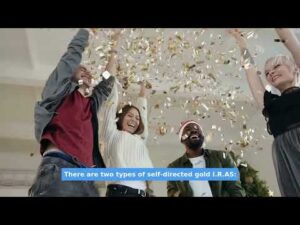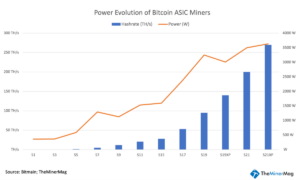The Role of Coinbase in Bitcoin Spot ETFs
As the approval of the Bitcoin Spot ETF draws near, it raises questions about who will be holding the bags and coins in the banking cartel. While Twitter is abuzz with self-proclaimed ETF experts discussing punctuation changes in applications, Coinbase has quietly positioned itself as a custodian in 9 out of the 12 Bitcoin Spot ETF applications. This is a significant development that warrants further examination.
Source: Bloomberg Intelligence, SEC Filing
Behind the Scenes of Coinbase's Custodial Role
Coinbase's prominent role in these ETFs raises curiosity about what is happening behind the scenes. Just days before the ETF approval, Coinbase made a surprising leadership change by replacing their custody CEO, Aaron Schnarch, with Rick Schonberg, a 30-year Wall Street veteran. This move, coupled with their dominance in the custodian roles, hints at potential involvement with the New York Banking Cartel.
It is crucial to understand the implications of Coinbase's position, especially when it comes to custodial risk. Custodial risk refers to the risks associated with entrusting a third party, known as a custodian, with the safekeeping and management of financial assets. These risks can manifest in various forms:
1. Operational Risk: Possibility of loss due to operational failures, such as administrative errors, technology glitches, process breakdowns, or losing the keys.
2. Fraud Risk: Potential for custodians to engage in fraudulent activities, like misappropriation of assets or manipulation of records.
3. Credit Risk: Risk of custodians becoming insolvent or unable to fulfill their obligations, resulting in asset loss.
4. Legal and Regulatory Risk: Exposure to loss due to non-compliance with laws and regulations, leading to fines, penalties, or legal actions.
5. Counterparty Risk: Risk of default or failure to honor obligations when custodians enter into transactions on behalf of clients.
6. Security Risk: Danger of theft or loss of assets due to inadequate physical and digital security measures.
Considering that Coinbase handles 75% of Bitcoin ETFs, each of these risks becomes a legitimate concern. It is essential to acknowledge that concentration of funds in a single custodian raises a major red flag. This situation increases the likelihood of a 6102 Bitcoin scenario.
The Concerns Surrounding Coinbase's Custodial Role
The recent developments regarding Coinbase's custodial role in nine out of twelve Bitcoin Spot ETF applications highlight significant concerns about custodial risk. With over 75% of the market share under Coinbase's control, investors must carefully evaluate the potential dangers associated with relying on a single entity for the storage and management of their paper bitcoins' reserves. While centralized custody services may offer convenience, the risks should not be ignored.
It is crucial for individuals to conduct their own research and fully understand the implications of custodial arrangements before investing in any Bitcoin ETF. By doing so, they can make informed decisions and minimize exposure to threats such as 6102 bitcoin, regulatory seizures, cyber-attacks, and other unforeseen events.
In conclusion, the approval of the ETF will undoubtedly bring about significant changes, with the New York Banking Cartel having a firm grip on Bitcoin. Amidst this evolving landscape, the concentration of custodial responsibility in the hands of Coinbase raises concerns. It is vital for investors to consider custodial risk and take necessary precautions to protect their digital assets.
Frequently Asked Questions
How does a gold IRA work?
People who wish to invest in precious metals can use Gold Ira accounts as a tax-free investment vehicle.
You can buy physical gold bullion coins at any time. To invest in gold, you don't need to wait for retirement.
The beauty of owning gold as an IRA is you can hold on to it forever. You won't have to pay taxes on your gold investments when you die.
Your heirs will inherit your gold, and not pay capital gains taxes. It is not required that you include your gold in the final estate report because it remains outside your estate.
You'll first have to set up an individual retirement account (IRA) to open a gold IRA. After you have done this, an IRA custodian will be assigned to you. This company acts as an intermediary between you and IRS.
Your gold IRA custodian can handle all paperwork and submit necessary forms to IRS. This includes filing annual reports.
Once you've established your gold IRA, you'll be able to purchase gold bullion coins. The minimum deposit required to purchase gold bullion coins is $1,000 You'll get a higher rate of interest if you deposit more.
When you withdraw your gold from your IRA, you'll pay taxes on it. If you are withdrawing your entire balance, you will owe income tax plus a 10% penalty.
You may not be required to pay taxes if you take out only a small amount. There are exceptions. For example, taking out 30% or more of your total IRA assets, you'll owe federal income taxes plus a 20 percent penalty.
It's best not to take out more 50% of your total IRA investments each year. If you do, you could face severe financial consequences.
Should You Buy or Sell Gold?
Gold was considered a safety net for investors during times of economic turmoil in the past. Today, many people are looking to precious metals like gold and avoiding traditional investments like bonds and stocks.
Although gold prices have shown an upward trend in recent years, they are still relatively low when compared to other commodities like oil and silver.
Experts think this could change quickly. They say that gold prices could rise dramatically with another global financial crisis.
They also noted that gold is growing in popularity because of its perceived value as well as potential return.
These are some things you should consider when considering gold investing.
- First, consider whether or not you need the money you're saving for retirement. It is possible to save enough money to retire without investing in gold. However, you can still save for retirement without putting your savings into gold.
- Second, ensure you fully understand the risks involved in buying gold. Each offer varying degrees of security and flexibility.
- Remember that gold is not as safe as a bank account. If you lose your gold coins, you may never recover them.
Do your research before you buy gold. And if you already own gold, ensure you're doing everything possible to protect it.
What are the benefits of a Gold IRA?
You can save money on retirement by putting your money into an Individual Retirement Account. It's tax-deferred until you withdraw it. You control how much you take each year. There are many types available. Some are better suited for college students. Others are designed for investors looking for higher returns. For example, Roth IRAs allow individuals to contribute after age 59 1/2 and pay taxes on any earnings at retirement. Once they start withdrawing money, however, the earnings aren’t subject to tax again. This type of account might be a good choice if your goal is to retire early.
Because you can invest money in many asset classes, a gold IRA works similarly to other IRAs. Unlike a regular IRA you don't need to worry about taxes while you wait for your gains to be available. People who prefer to save their money and invest it instead of spending it are well-suited for gold IRAs.
You can also enjoy automatic withdrawals, which is another benefit of owning your gold through an IRA. This eliminates the need to constantly make deposits. Direct debits could be set up to ensure you don't miss a single payment.
Finally, the gold investment is among the most reliable. Its value is stable because it's not tied with any one country. Even in economic turmoil, gold prices tends to remain relatively stable. Therefore, gold is often considered a good investment to protect your savings against inflation.
How do I open a Precious Metal IRA
First, you must decide if your Individual Retirement Account (IRA) is what you want. Once you have decided to open an Individual Retirement Account (IRA), you will need to complete Form 806. Then you must fill out Form 5204 to determine what type of IRA you are eligible for. This form should be completed within 60 days after opening the account. After this, you are ready to start investing. You may also choose to contribute directly from your paycheck using payroll deduction.
For a Roth IRA you will need to complete Form 8903. Otherwise, it will be the same process as an ordinary IRA.
You'll need to meet specific requirements to qualify for a precious metals IRA. The IRS says you must be 18 years old and have earned income. Your earnings cannot exceed $110,000 per year ($220,000 if married and filing jointly) for any single tax year. And, you have to make contributions regularly. These rules apply whether you're contributing through an employer or directly from your paychecks.
You can invest in precious metals IRAs to buy gold, palladium and platinum. However, you won't be able purchase physical bullion. This means you won’t be able to trade stocks and bonds.
You can also use your precious metallics IRA to invest in companies that deal with precious metals. Some IRA providers offer this option.
However, there are two significant drawbacks to investing in precious metals via an IRA. First, they're not as liquid as stocks or bonds. This makes them harder to sell when needed. Second, they don't generate dividends like stocks and bonds. Also, they don't generate dividends like stocks and bonds. You will eventually lose money rather than make it.
Statistics
- You can only purchase gold bars at least 99.5% purity. (forbes.com)
- If you accidentally make an improper transaction, the IRS will disallow it and count it as a withdrawal, so you would owe income tax on the item's value and, if you are younger than 59 ½, an additional 10% early withdrawal penalty. (forbes.com)
- (Basically, if your GDP grows by 2%, you need miners to dig 2% more gold out of the ground every year to keep prices steady.) (smartasset.com)
- Contribution limits$6,000 (49 and under) $7,000 (50 and up)$6,000 (49 and under) $7,000 (50 and up)$58,000 or 25% of your annual compensation (whichever is smaller) (lendedu.com)
- Indeed, several financial advisers interviewed for this article suggest you invest 5 to 15 percent of your portfolio in gold, just in case. (aarp.org)
External Links
forbes.com
- Gold IRA: Add some sparkle to your retirement nest egg
- Understanding China's Evergrande Crisis – Forbes Advisor
irs.gov
investopedia.com
- Do You Need a Gold IRA to Get Retirement?
- What are the Options? Types, Spreads. Example. And Risk Metrics
bbb.org
How To
How to keep physical gold in an IRA
An easy way to invest gold is to buy shares from gold-producing companies. But this investment method has many risks as there is no guarantee of survival. Even if they survive, there's always the risk that they will lose money due fluctuations in gold prices.
Alternative options include buying physical gold. You'll need to open a bank account, buy gold online from a trusted seller, or open an online bullion trading account. This option offers the advantages of being able to purchase gold at low prices and easy access (you don’t need to deal directly with stock exchanges). It is easier to view how much gold has been stored. The receipt will show exactly what you paid. You'll also know if taxes were not paid. You also have a lower chance of theft than stocks.
There are however some disadvantages. There are some disadvantages, such as the inability to take advantage of investment funds and interest rates from banks. You can't diversify your holdings, and you are stuck with the items you have bought. Finally, the taxman might want to know where your gold has been placed!
BullionVault.com has more information about how to buy gold in an IRA.
—————————————————————————————————————————————————————————————-
By: Joe Rodgers
Title: Brian’s Big Bags: Custodial Risk and the Future of Bitcoin ETFs
Sourced From: bitcoinmagazine.com/markets/brians-big-bags-etf
Published Date: Tue, 09 Jan 2024 14:40:06 GMT















